Many people’s first thought after discovering their central heating system has a leak is to book a boiler service – but be warned; this alone won’t deal with the problem.
While a Gas-Safe engineer will be able to check your boiler components, they will not have the time and tools needed to explore more complex issues throughout the system. Your boiler could get a clean bill of health – yet you could still have a serious leak somewhere in your central heating pipes.
The best and most cost-effective way to deal with your leak is to use a Trace and Access service from a professional leak detection company.
To make sure heat gets to every part of your house, the water in your central heating system is held under pressure. The problem is, if this pressure drops too low, your boiler is designed to switch off – which means no heat and no hot water.
To get to the bottom of the problem, you might need the help of a professional leak detection service – but before we explore how we’d help you tackle your central heating pressure problems; we’ll help you understand why leaks occur and look at a couple of steps you can take to attempt to solve the problem yourself.
Central heating pressure Gauge Virtually all boilers have a pressure gauge on the front. Most of these are hydraulic dials, although you’ll find some have a digital display. Usually, you’d expect your boiler pressure to be around 1 bar if your heating is off, and around 2 bar when the heating is on and the system is warm.
Although there are a few sensitive components in your boiler that could cause pressure problems, generally, if your pressure reading is lower than this, it’s likely to mean that you’ve either got a leak – or you’ve got air trapped somewhere in the system.
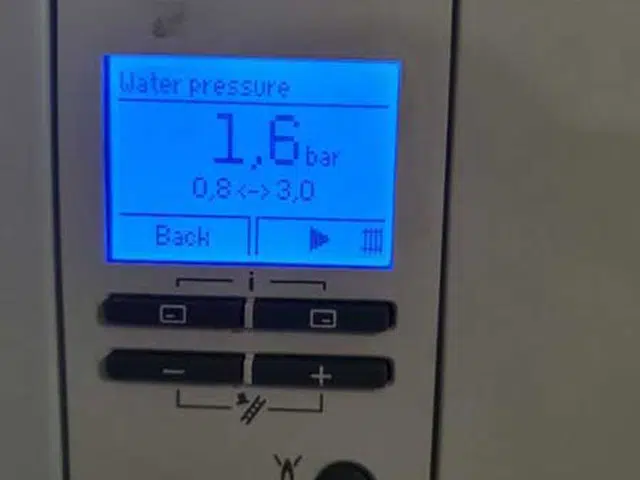
It’s easy to consider leaking central heating pipes or your boiler losing pressure just to be an inconvenience – but they’re actually problems that can end up causing a lot of expensive damage if you don’t deal with them quickly.
The trouble is, your central heating system runs all the way through your house; under your floors, through your walls, and often even into your loft space. As a result, water can leak in places that aren’t immediately obvious – and a lot of damage can occur before there are any visible signs.
Even a small, steady drip of water can cause damp in the structure of your home – and unless you act quickly, you might find the bill for putting things right will run into thousands – sometimes even tens of thousands.
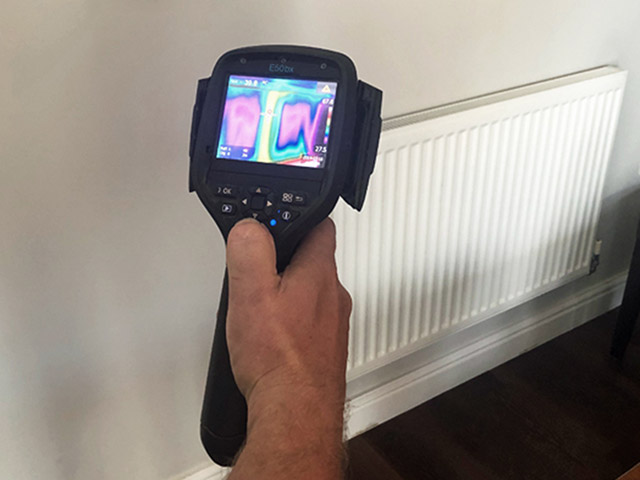
Air causes a problem in central heating systems because it can be compressed more easily than water. As the pressure in the system goes up, the water compresses the air, and your system pressure drops again.
The only way to solve the problem is to bleed your radiators – to get rid of the air altogether.
Luckily, this is easily done. You’ll need a bleed key – and, if you’re not careful, a towel! Use the bleed key to gently release the radiator vent – and, if you’ve got trapped air, it’ll hiss out – similar to letting air out of a bike or car tyre. Remember, there’s water in there too, so when the hiss stops, get ready to tighten the vent back up – before water comes out.
You should repeat this process with each of your radiators and towel rails.
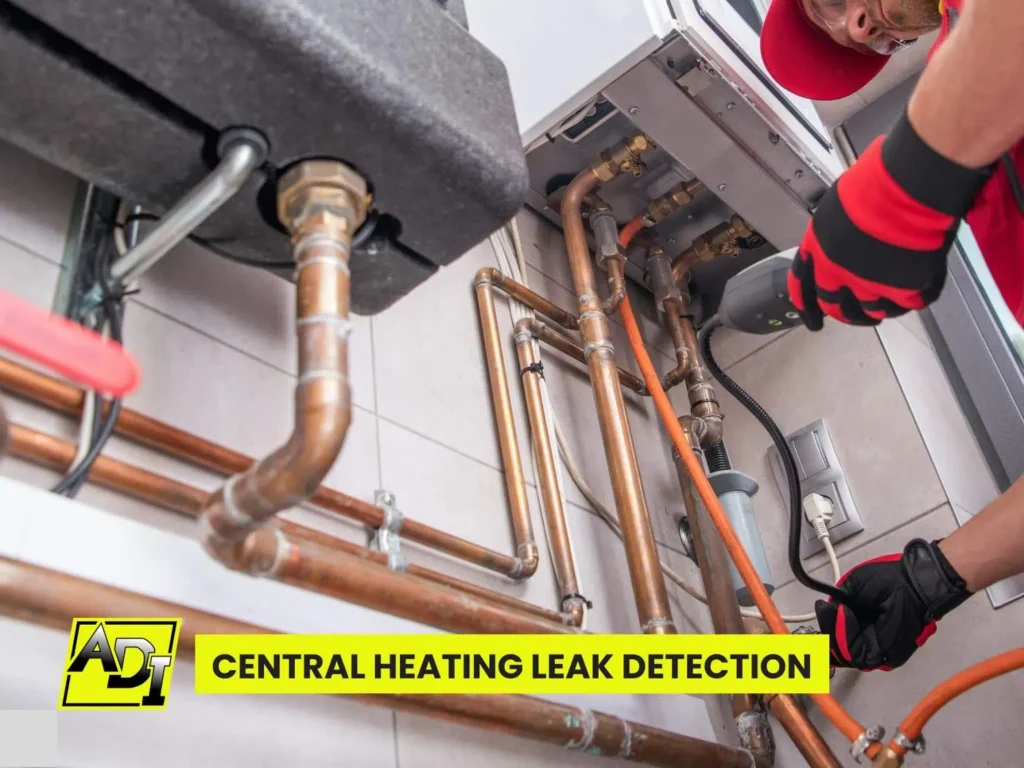
Assuming you’ve managed to get air out of your radiators, you’ll find that the pressure in your boiler might have dropped again. You’ll need to top this up using the ‘filling loop’.
On many boilers, the filling loop is part of the system – but on some, it’s an additional length of hose that you’ll need to secure to the pipework near the boiler. If you’re unsure about any part of the process, you should check your boiler instructions – or check on your boiler manufacturer’s website – as many have helpful videos explaining what to do.
Usually, topping up the system fluid and pressure will require you to:
It’s vital that you only increase the pressure in your boiler if you’ve followed your manufacturer’s instructions and feel absolutely confident doing so. Overfilling a boiler can cause damage (and further leaks) – so be careful.
If you notice your boiler pressure dropping away straight after you’ve followed this procedure, you should get in touch with us as quickly as possible – as this would indicate a large leak that needs immediate attention.
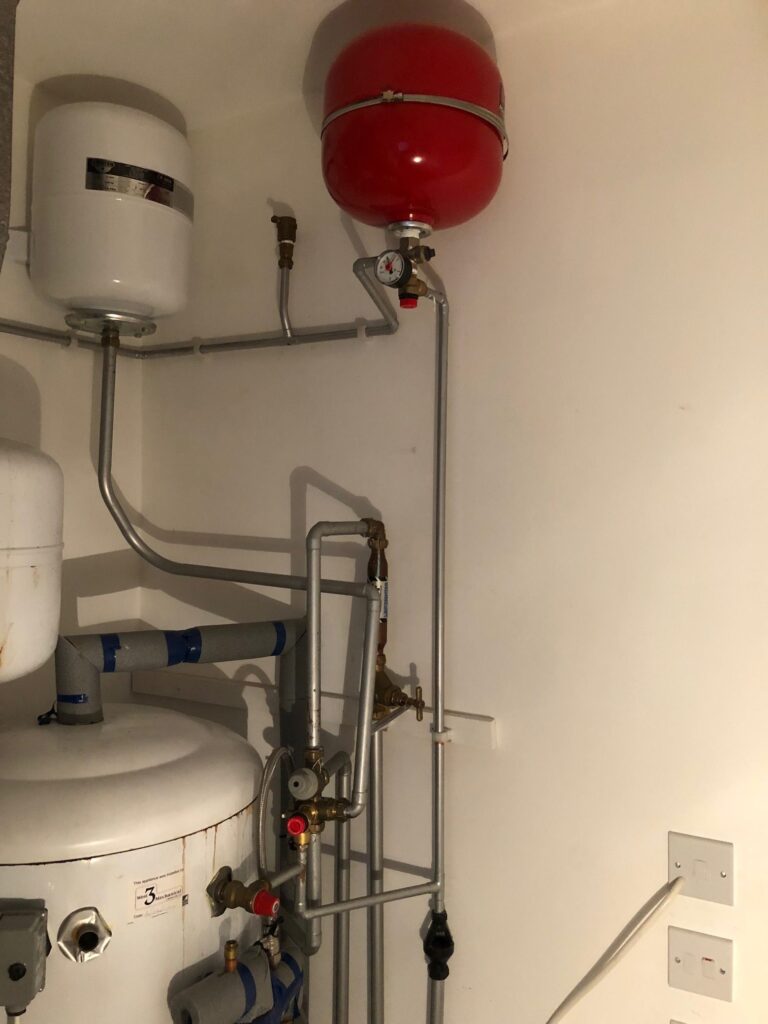
If you manage to top-up your boiler and it keeps good pressure after bleeding your radiators, this is great news. That said, if your boiler continues to lose pressure, it’s important you don’t just keep topping it up and ignoring an underlying problem.
The fluid that’s inside your radiators isn’t just water – it’s actually got a number of chemicals mixed into it. This fluid will have been added when your system or boiler was installed – and it’s referred to as an ‘inhibitor’.
Inhibitor fluid is designed to stop nasty build-ups of sludge or corrosion in your heating pipes. It comes in a very concentrated formula – to be diluted by water in your system. However, if it’s diluted too much, it becomes ineffective – and this can lead to increased wear and poor efficiency throughout your system. If you’ve got a leak and you keep topping up with water, you’ll eventually have no inhibitor left.
Because of the damage that can be caused, continually topping up from the filling loop isn’t a good idea. If your system continues to lose pressure, it’s time to take more serious steps.
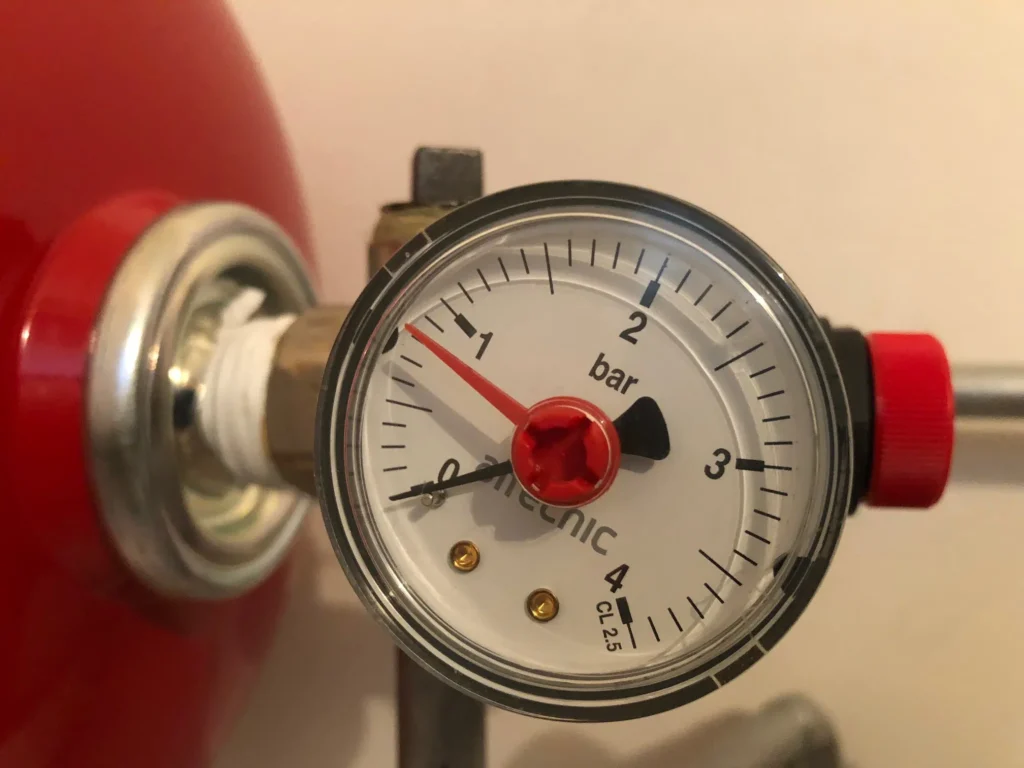
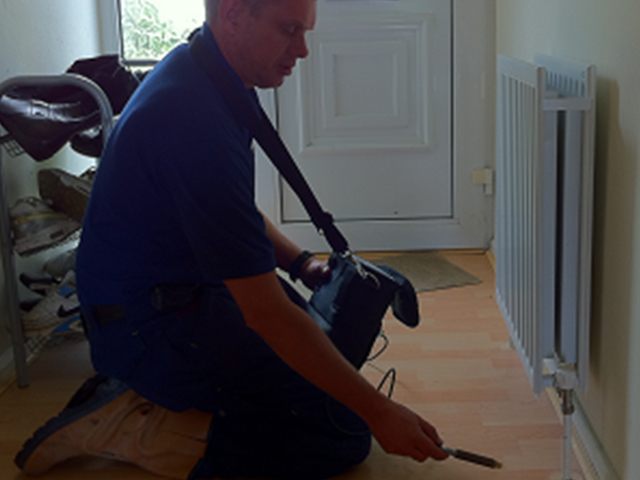
Tracer gases are a non-invasive way to detect a leak in a central heating system. Firstly the heating system is drained and a completely safe non toxic mix of gases is filled into the pipework, then a highly sensitive probe is run along the pipework that runs throughout the property, as the gas is released through many cracks it alerts the probe and the location of the leak is found. As the gas rises from the damaged pipework its particles are small enough to travel up through wood, carpet, tiles and even concrete! This means we are able to use this method to locate the leak without having to cause any mess or damage to your home.
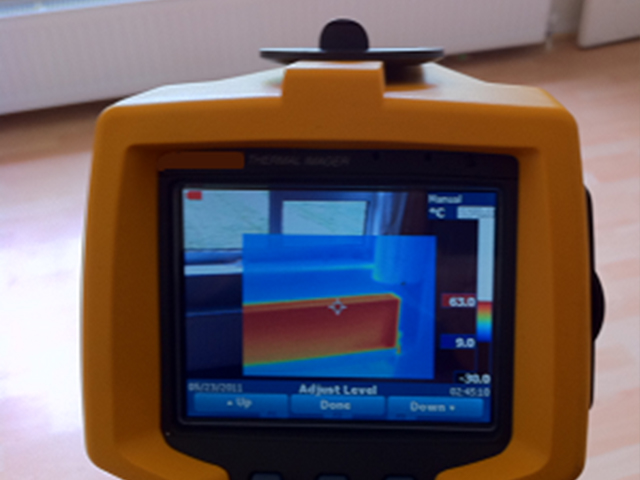
Thermal imaging is a powerful technique we use to find central heating leaks. Using a high tech camera that shows the thermal energy that the pipes let off we are able to use this technology to detect where the central heating pipes are hiding under floors and inside wall cavities and see where the leak is coming from. As water leaks cause discrete temperature variations the thermal imaging camera picks up the abnormal temperatures the images produce. This is also an important tool used alongside other leak detection techniques so our engineers know exactly where hidden pipes are around your home so they know where to search.
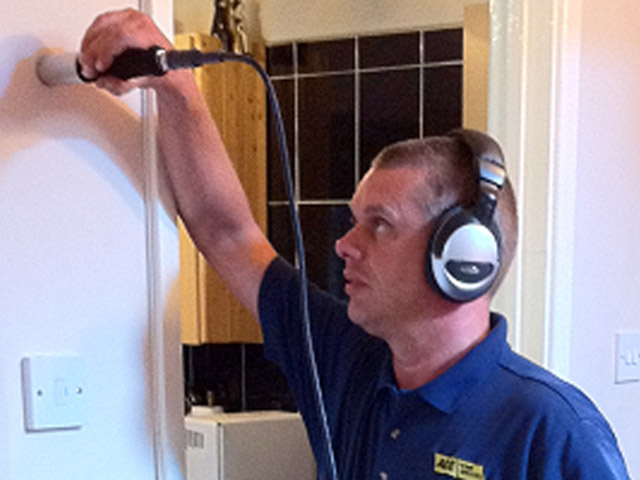
An acoustic microphone is a highly sensitive device that detects the noise of a leak escaping from a pipe, as every water leak, be it big or small, creates noise. Our acoustic listening devices are able to pick up and amplify these noises for our engineers to detect. We are then able to correlate the exact location of the leak by using two listening devices at the same time to triangulate where the sound is coming from by calculating how far away the noise is from each microphone. This technique is especially useful for pipes that are buried deep under floors or inside an insulated wall.
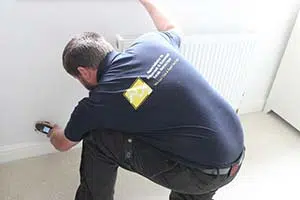
Moisture metres check the levels of moisture on surfaces. Our engineer will take several readings around your home where central heating pipes run around your property and around the boiler itself to check for areas with higher levels of moisture to pinpoint the source of the water leak. Higher levels of moisture present indicate there may be a central heating leak nearby. Sometimes as some materials are harder to test then others we may need to drill a small hole to take more accurate readings inside the surface. Although this approach isn't completely non-invasive, the damage caused is very minimal with this method.
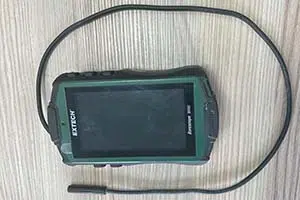
Borescopes are specialised inspection cameras that have a flexible tube with a light source and camera on the end which transmit high definition images and videos that can be viewed in real time by the operator. They are specially designed to inspect hard to reach areas like inside walls, floors and other confined spaces to search for signs of water leaks. This method requires a small hole to be drilled into the area that needs inspection behind it if no other access point is available, but as the borescope is no larger than 6mm in diameter the drilled hole is very small and can be repaired easily leaving no evidence of it ever being there.
There’s a range of Central Heating leak sealants that claim to offer a quick solution to finding and fixing a leak in a pressurised system – but be warned; they’re never as effective as physically dealing with the problem.
The issue is, leak seal is not an exact science. It may partially fix the leak – but it also might attach to rust and corrosion to cause further problems. There are instances where sealant has led to bigger issues needing repairs elsewhere in the system.
Don’t be tempted by a sticky-plaster approach to a problem that can cause serious damage to your property.
Virtually all building insurance policies cover ‘Trace and Access’ for central heating leaks – so any charge will usually be refunded to you. What’s more, we have partners who are on hand to help you deal with any related insurance claim – so you don’t need to worry about the paperwork or phone calls involved.
We know better than anyone that being in a home with a leak, no heating, and no hot water is stressful enough; so we’ll make sure you’re helped with every step – we’ll even ensure you’ve got all the reports you need to support your insurance claim.
If you think there’s a leak in your central heating system, acting fast is the key to keeping your costs down.
Get in touch with us now by calling 0800 731 3843 . You’ll speak to a friendly and knowledgeable member of the team who’ll help you deal with your central heating leak today.
Privacy Policy | Terms & Conditions | Sitemap | Registered Office Address: 128 City Road, London, United Kingdom, EC1V 2NX